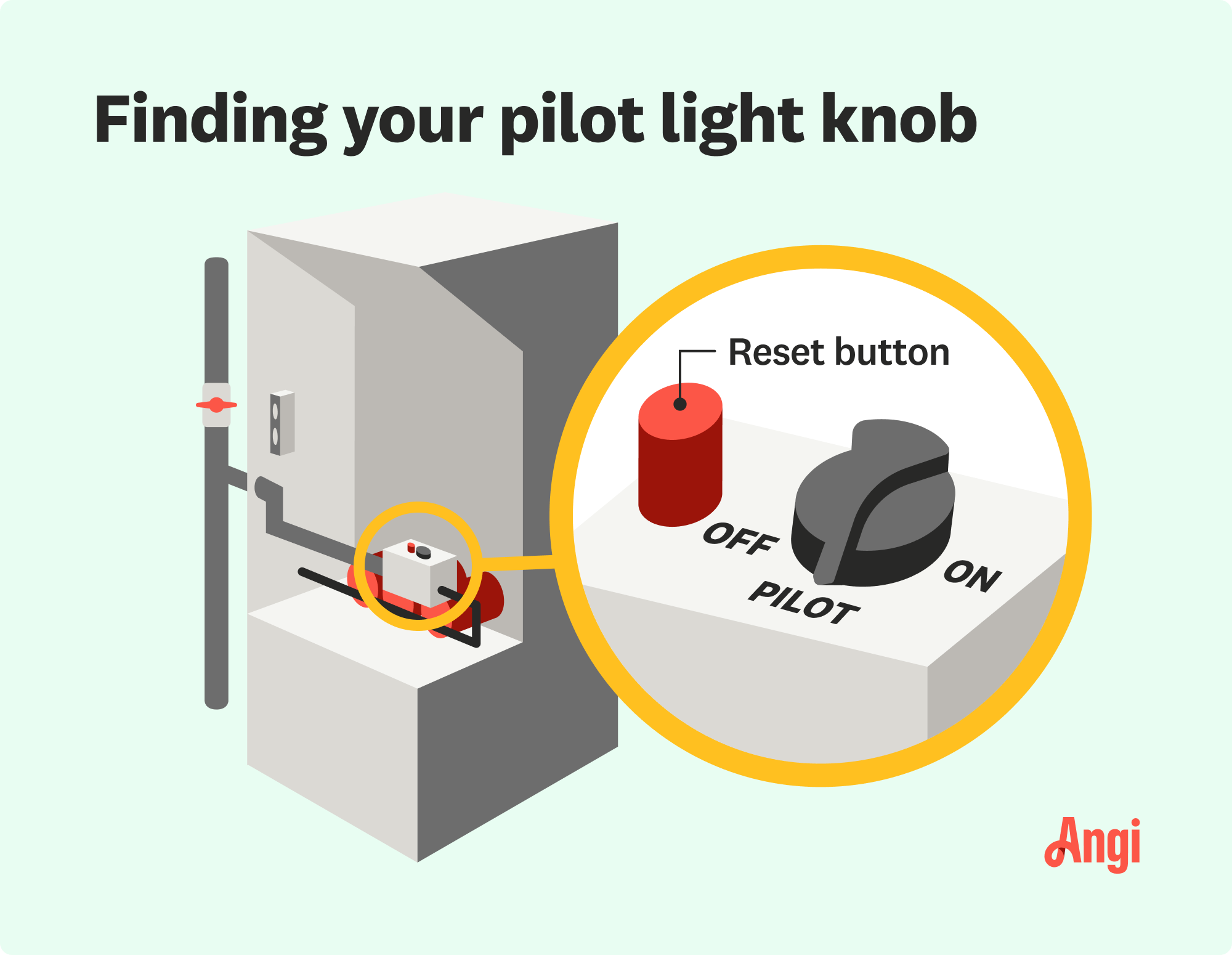
The average boiler installation cost depends on size, system type, and other factors. Keep reading to learn the cost of a new boiler in Los Angeles, CA.
Follow these simple steps to get your home nice and toasty


From time to time, the pilot light on your furnace might go out—whether it’s due to dirt building up inside it, damaged equipment, or wind blowing toward the flame. No matter the cause, it’s important to reignite the pilot light as soon as possible; otherwise, your furnace won’t turn on, and your house can get uncomfortably chilly. Follow these five steps to find out how to relight a pilot light on a furnace.
Learning how to relight a pilot light on an old furnace isn’t particularly difficult, but there are a few things to remember before tackling this job. For one, you’ll be dealing with fire and natural gas, so it’s important to follow the safety warnings in your user manual and the instructions below. If you don’t feel confident with this type of work, you can always call a local furnace repair company for help.
If you smell gas at any point, turn off the gas valve and leave your home immediately. Once you’re outside, call your gas company or emergency services for next steps.
Before you get started, review the user manual for your furnace. It should contain important safety information about your heating unit, as well as the locations of your furnace’s key components, such as the pilot light and reset switch. On some furnaces, the pilot light is near the bottom, but this isn’t always the case, so it’s best to double-check in your manual.
If you misplaced your physical manual, it might be available online through your manufacturer’s website.

Find the pilot light on your furnace. Near there, you should see a knob with at least three settings: on, off, and pilot. (Yours may also include settings for “hot,” “very hot,” and “low” if it’s a newer model.) Flip it to the “off” setting to stop gas from flowing. If you have a basement or attic furnace that’s dark and hard to access, you might need to use a flashlight to help you see.
After turning off your furnace, wait five to 10 minutes before moving forward. This is a critical step that helps clear out any remaining gas in the air so it doesn’t ignite when you relight the pilot.
During this time, you can look for the reset button (which is usually red and should be near the pilot light).

Go back to the knob and put it on the “pilot” setting. If you have a newer furnace, you should be able to relight the pilot light just by pressing on the red reset button. After holding it down for a minute, your pilot light should stay lit. If not, it might be time to call in a pro.
Older furnaces will need to be relit manually. You can do this by pressing and holding the reset button and, at the same time, using your lighter or match to reignite the pilot light. When the pilot catches the flame and stays lit, you can release the reset button.
Once the pilot light is burning, you can set the knob to “on” to start your furnace again. Keep an eye on it for a few minutes, making sure that it stays lit. You might also want to inspect the area around your furnace and check for drafts, which could have caused your pilot light to go out in the first place.
According to Angi data, nearly 41% of customers reported that their gas furnace or forced air heating system doesn’t provide heat or doesn’t get hot enough. Almost 10% of customers said their pilot light went out, making it a common issue among homeowners.
Check out how your furnace problem stacks up against other Angi customers:
Overall, relighting a pilot light is a straightforward DIY job, but there are some safety risks involved, including the possibility of an explosion or fire. Because of that, it’s better to reach out to a professional if you aren’t comfortable working with natural gas. Also, if you follow these steps, but your pilot light won’t light or stay lit, it’s time to call in an expert.
The price of hiring a pro will vary depending on what’s wrong with your furnace. Repairs usually run between $130 and $500, although you might pay up to $1,400 for more extensive damage. If you need a replacement, a new furnace costs between $2,800 and $6,800.
From average costs to expert advice, get all the answers you need to get your job done.

The average boiler installation cost depends on size, system type, and other factors. Keep reading to learn the cost of a new boiler in Los Angeles, CA.

What you’ll pay in Los Angeles for furnace repairs depends on many factors. Here’s a breakdown of what can go wrong and the cost to fix those issues.

Discover the factors influencing air duct replacement costs in Los Angeles, CA. Learn how to save money and make an informed decision for your home's comfort.

When you notice hot and cold zones in your home, it pays to learn how to balance airflow in your ducts to even out the temperature.

Prepping your furnace can extend the life of your unit and stop costly repairs. Follow these furnace maintenance tips for a warm, stress-free winter.

If your furnace is making loud noises, it could be the first sign something is failing. This guide will go over some of your furnace’s most noisy issues.